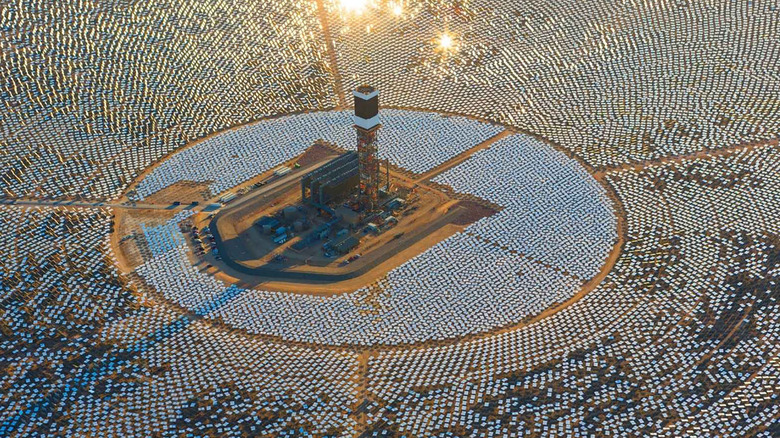America Wasted $2.2 Billion On This Failed Operation Out West
In the mid-2010s, the United States Government made a clear statement regarding the future of sustainability and energy in the nation. They did this by granting several grants to build multiple solar plants in the western part of the nation. One such plant was the Ivanpah Solar Project, which is located in the Mojave Desert. This plant received $1.6 billion combined from three federal grants, which helped the facility begin commercial operations in January of 2016. But less than 10 years later, the plant announced plans to cease operation.
At the time of its opening, the plant was the largest concentrating solar power (CSP) plant in the world, with three separate units harnessing the power of the sun. According to the U.S. Department of Energy, the initial report on the project had projected an output of 392 megawatts, with the goal of boosting the California energy grid at the homeowner level. But after a 2021 state mandate for owner Pacific Gas and Electric Company (PG&E) to evaluate its energy supply, the company found that the plant was running at a much lower rate than projected. This mandate was partly due to California's rising energy costs, making it one of the states with the highest costs for consumers. According to an official statement from PG&E, it was partly this finding that prompted the closure of the plant by 2026.
Ivanpah failed to meet output standards for multiple reasons
Aside from just low outputs compared to projections, PG&E has chosen to close Ivanpah for multiple reasons. Part of this choice was due to low investment returns, both from public trade and government subsidies. The reason for this was that the company was forced to use fossil fuels to run the plant rather than leveraging its own power production. This is in part because the plant utilizes automated solar panels called heliostats, which rotate to catch the sun. These heliostats are operated by computers that ultimately run on energy generated from physical fuels rather than solar power. Limitations like this are reasons many experts advise investors to diversify their portfolios, as new technologies may prove risky.
Other reasons that have influenced the closure of the plant while not stated in the company's release. According to the Institute for Energy Research, the plant's size and scale required many large solar panels, which institutions, including the Association of Avian Veterinarians, have linked to the death of 6,000 birds. Additionally, further innovation in solar power at the consumer level has outpaced the practicality of large plants like Ivanpah. One such innovation is rooftop solar panels, for which the U.S. Department of Energy has published a statement on the technology's high potential. Installing rooftop solar panels has become popular as a way to both increase home value and lower energy costs for homeowners.

